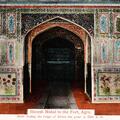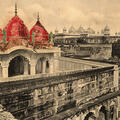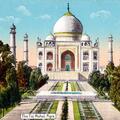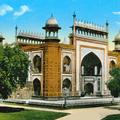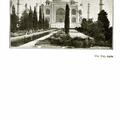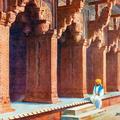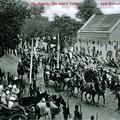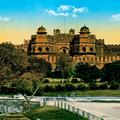Sheesh Mahal in the Fort, Agra
[Original caption] Built during the reign of Akbar the great in 1599 A.D. [end]
An apparently delicately stenciled postcard where the dense but eroded condition of the original panels are veiled by loosely applied tints.

